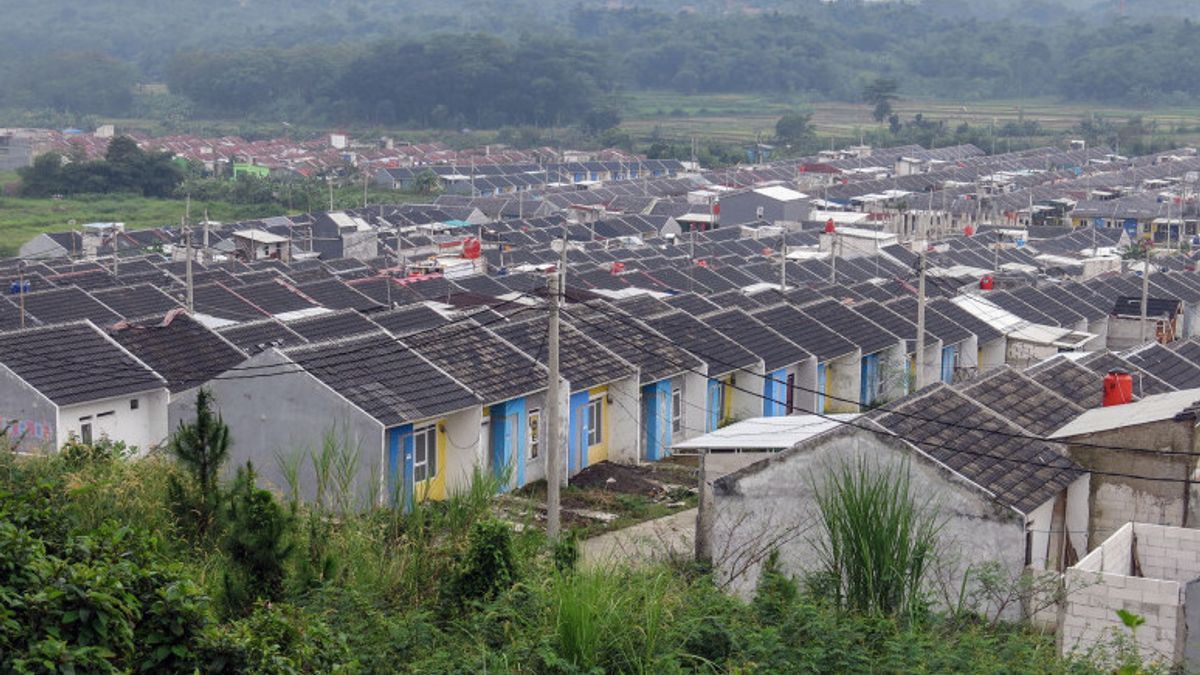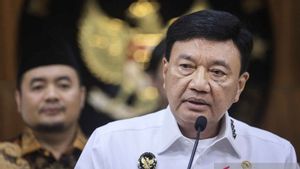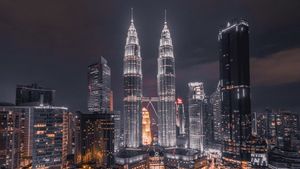JAKARTA - Every August 25, Indonesia commemorates National Housing Day. The election of August 25 began with the Healthy People's Housing Congress which was opened by the First Vice President of the Republic of Indonesia Muhammad Hatta on August 25-30 1950.
On August 6, 2008, there was a Decree of the Minister of State for National Housing No: 46/KPTS/M/2008 concerning National Housing Day which declared August 25 as National Housing Day. At the congress in 1950, Bung Hatta said that the aspiration to fulfill the housing needs of the people was not impossible.
The theme for National Housing Day is different every year. This year, the Director General of the Ministry of PUPR Khalawi AH said the themes taken were; Labor Intensive Housing Restores People's Economy.
"We involve the PUPR Young Generation (Genmud) in the 2021 Hapernas, so that they can also play a role and care more about the housing program in Indonesia. We also encourage the construction of large-scale housing and settlements for low-income communities as an effort to provide housing," Khalawi said, citing the official website of the Ministry of Administrative Reform and Bureaucratic Reform.
According to Khalawi, the construction of infrastructure and housing will help encourage economic growth during the COVID-19 pandemic. Khalawi also stated that the housing sector adds to its function for the community as well as being the driving force for hundreds of housing industry sectors and creating jobs for the community through cash-intensive work.
"The infrastructure and housing sectors, especially through the One Million Houses Program, play a very important role in Indonesia's economic growth efforts during this pandemic," said Director General Khalawi.
Khalawi added that houses, especially houses that are suitable for habitation, are important in the midst of this pandemic and are one of the places that are desperately needed by the community. Apart from being a place to live, the house also has many other functions during this pandemic, including as a place to work, study for school children, a place of worship and even become a place of self-isolation for people exposed to the COVID-19 virus.

The concept of housing in Indonesia has been known for a long time, even before the arrival of the Dutch. Citing the website of the Ministry of Public Works and Public Housing, housing arrangements in traditional kingdoms or villages can be traced from heritage sites from the Majapahit Kingdom to Mataram, even traditional villages that are still preserved today, including those in Toraja and Flores.
In 1924, the Dutch East Indies Government issued the Burgelijk Woning Regeling or the Civil Servant Housing Regulation or also abbreviated as BWR. This regulation encourages the provision of housing for Civil Servants by the Dutch East Indies Government. The Dutch East Indies government was serious about structuring the city to be more modern like in Europe. The government also wanted to provide a decent place to live for Europeans in Indonesia.
At that time, the Dutch East Indies government's efforts to build decent housing were doing village repairs and counseling about healthy homes. The control of the bubonic plague was also carried out in slum housing areas.
Until finally in 1945, the Department of Public Works was formed, one of whose duties and functions was to carry out the construction and maintenance of buildings. But at that time the condition of the country was not safe. The community does not feel the housing development
In 1949, the City Establishment Act was enacted. The law underlies the construction of Kebayoran Baru, the pioneer of Indonesian housing development. The Healthy Housing Congress was held for the first time on August 25-30 1950 in Bandung.

Blake housing illustration (Wheeler/Unsplash)
Many housing programs have been carried out by the government so that people get decent housing. In 1966, Jakarta Governor Ali Sadikin initiated the Muhammad Husni Thamrin (MHT) Project. The project is to improve slum villages to make them livable. The project which was also called the Kampung Improvement Program (KIP) later became a national project in the following years.
In 1980, there was a Technical guideline for the Development of Simple Non-Story Housing which regulates the model of a simple house. In addition, the Ministerial Decree (Kepmen) of Public Works No.1/KPTS/1989 was issued to regulate the Ready-to-Build Plot Program.
Then Presidential Decree No. 14 of 1993 concerning Civil Service Housing Savings was issued which was later amended by Presidential Decree No. 46 of 1994 with the same title. This was followed by the establishment of the Civil Servant Housing Savings Advisory Board (Bapertarum-PNS) as the executor of savings fund management.
In 2000, the Directorate General of Settlement Development in collaboration with UNDP implemented the INS/00/003 (CoBild) project for community empowerment in settlement planning. Until finally in 2006, the Thousand Tower Flats Program was born
President Joko Widodo on April 29, 2015 also issued a program to provide decent housing, namely the One Million Houses Program. At that time the government targeted the construction of 5 million housing units in 2015-2019. However, the target was achieved.
Citing CNBC, during the 2015-2018 period, 3,542,318 housing units were built, with a composition of 70 percent low-income community (MBR) houses and 30 percent non-MBR houses. In 2019, the Ministry of PUPR targets the achievement of the One Million Houses Program to be higher than the previous year, which was 1.25 million houses.
Jokowi then continued the program again in the second period of his administration, namely 2020-2024. The Ministry of Public Works and Public Housing (PUPR) noted that the program target of 1 million houses in 2021 has only reached 515,107 units from the target of 1,105,000 units.
"In 2021 the first half of the achievement is 515,000 units," said Director of Public Housing and Commercial of the Ministry of PUPR Fitrah Nur on Friday, August 20, 2021. In the document she explained, the realization consisted of houses for MBR amounting to 451,506 units and non-MBR 63,601 units.
*Read other information about TODAY's HISTORY or read other interesting articles from Putri Ainur Islam.
TODAY'S HISTORY More
The English, Chinese, Japanese, Arabic, and French versions are automatically generated by the AI. So there may still be inaccuracies in translating, please always see Indonesian as our main language. (system supported by DigitalSiber.id)













